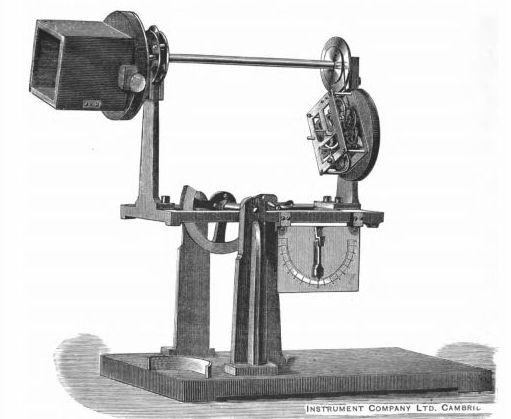Thursday, March 25, 2021
It's fortunate....
It's too bad that Darwin's vague theories about species turned into an ISM. His real scientific EXPERIMENTS, continued by his son Francis, were hugely valuable. We've forgotten the long set of experiments on plant intelligence.
I ran into this 1891 experiment while looking for old devices to animate...
 = = = = =
What about Miss Pertz? According to Wikipedia, Dorothea Pertz co-authored five papers with Francis, and gained membership in various societies, but didn't stick around.
= = = = =
What about Miss Pertz? According to Wikipedia, Dorothea Pertz co-authored five papers with Francis, and gained membership in various societies, but didn't stick around.
Mr. Francis Darwin, president of the Biological Section, read a paper by himself and Miss D. F. Pertz on "The Artificial Production of Rhythm in Plants." The paper was illustrated by experiments. The apparatus employed is a new form of klinostat designed by the Cambridge Scientific Company. The plant to be experimented on is fixed to a spindle, which, by means of a clockwork escapement, makes a sudden semi-revolution every half hour. Thus the plant is subjected to a series of alternate and opposite influences from light or gravitation, as the case may be. To take the case of gravitation, the plant will tend to curve upwards during the first half-hour, and during the second interval (when the horizontal spindle has made half a turn) it will tend to curve geotropically in the opposite direction. Under these conditions it is found that a rhythmic state is induced which closely resembles the periodicity in rate of growth which is set up in plants by the alternation of day and night. A remarkable result is obtained by stopping the clockwork; that is to say, by substituting a continuous for a changing stimulus. The plant continues to curve with an acquired rhythm just as if the clockwork were still in action; it has, in fact, learned and remembered the half-hourly period. This is precisely similar to certain natural rhythms - for instance, to the "sleep" of flowers, which for a short time continue to open and shut although kept constantly in the dark.This work was forgotten for a long time, and "newly discovered" about 20 years ago, after many decades of THEORY that told us plants can't possibly learn. Our THEORY, which still battles against the horrible forces of Lamarck and Lysenko, tells us that plants can't possibly remember anything. We call our THEORY Darwinism. It's fortunate that Francis Darwin wasn't a Darwinist. = = = = = Here's the Cambridge Instruments klinostat. The plant is clamped (without soil?) in the box, and the clockwork can be set to flip at intervals or turn steadily.
 = = = = =
What about Miss Pertz? According to Wikipedia, Dorothea Pertz co-authored five papers with Francis, and gained membership in various societies, but didn't stick around.
= = = = =
What about Miss Pertz? According to Wikipedia, Dorothea Pertz co-authored five papers with Francis, and gained membership in various societies, but didn't stick around.
After Darwin's retirement, Pertz was encouraged by Frederick Blackman to undertake research on meristematic tissue, but after a year observing germinating seeds her results were inconclusive. She abandoned research, possibly over disappointment, though Agnes Arber claimed "she came to recognize that the plant physiology of the twentieth century was developing on lines widely divergent from those on which she had been educated and that it demanded a grasp of mathematics, physics, and chemistry, which she did not possess."I'm betting that her grasp of math wasn't the real "divergent lines". More likely she was disappointed by the focus on math and the loss of experimentation. She continued working in botany outside of the academy, making illustrations and indexes for texts.
Labels: Carver, Smarty-plants
